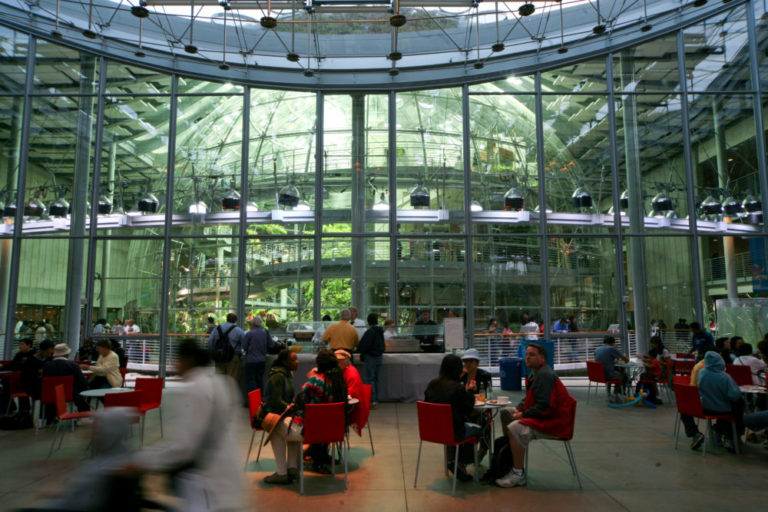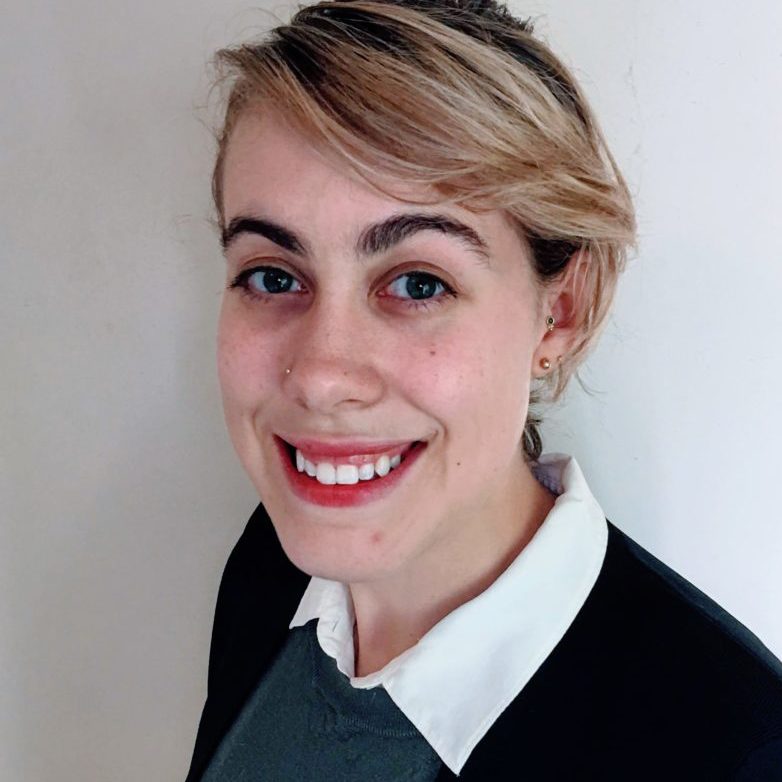
Holly Williams, a physical chemist, is ESAL’s Blog Content Coordinator. In San Francisco, Calif., she volunteers as a docent at the California Academy of Sciences.
YD: Why did you decide to volunteer at a natural history museum?
Williams: Community service has always been an important part of my life. A few years ago, I realized I wanted to spend some time outside of the laboratory to share my love of science with the public and engage with them about real-world issues that they could take action on themselves. I began looking for weekend volunteer positions as a science educator. Docent work was a natural fit.
YD: How did you become a docent?
Williams: I had been to the California Academy of Sciences several times and had fallen in love with it, so I was excited by the opportunity to explore the museum behind-the-scenes. I applied online, came in for an interview, and then took a docent class. I applied in August and the class was in October.
You’re trained on specific exhibits at the museum. First, you learn the exhibit material. Second, you learn to identify a visitor’s (1) core motivation and (2) learning style. This helps us engage with guests more successfully by personalizing each discussion.
YD: What do you do as a docent?
Williams: I go to an area that I’m trained on and I’ll engage with guests. Usually I have a prop like an animal skull so the kids can touch and explore, and it catches peoples’ eye. I let the person I’m speaking with ask all of the questions and lead the conversation. Maybe we’ll talk about how animals have adapted to use colors in different ways in nature. If it’s a three year old, you won’t have that high level of discussion, but you might with elementary and middle schoolers. I rotate where I am about every hour, and I do that for three hours, twice a month. It’s a pretty low key time commitment.

Holly Williams
YD: What has been the impact of your volunteering on yourself and on your community?
Williams: I’m a bit of an introvert and I’m used to talking to scientists about science, which is very different from how you talk to a member of the general public. I’m getting better at understanding why the guest cares and what are they interested in learning. People don’t go to science museums just for fun; they’re always excited to learn something. From my point of view, the one on one engagements make or break the museum experience. I’m a messenger of the museum and the public face of the museum.
More broadly, I talk to all different kinds of guests, but my favorite are kids on community free days. We have a touch tide pool where you can touch sea urchins and sea stars, and there are people who have never seen one or touch one. It’s really cool to be able to expand their world view, especially with the kids. Kids are really observant and often ask better questions than adults.
Learning theory and museum education were completely unfamiliar to me before I began volunteering, but I’ve found that even a basic understanding of these topics has revolutionized how I talk with the public about science. In particular, it has caused me to focus more on crafting a good “hook”---an engagement cannot be effective unless it happens in the first place.
Effective science interpretation may include analogies, stories, or sensory items. Ultimately, my abilities as a science educator have been most improved by spending time on the floor each month and getting feedback from the volunteer department staff. Practice makes perfect!
YD: What advice would you give to scientists and engineers who are interested in engaging with their communities?
Williams: Volunteer work focused on outreach is an excellent opportunity to cut your teeth on community engagement. You can get involved by leveraging your STEM background in small ways and still feel tremendously rewarded. I spend 6-9 hours a month with the museum community and am so inspired by their enthusiasm and dedication to outreach and science education.
The institutional knowledge of the museum is invaluable. As a docent at the California Academy of Sciences, I am tasked with inspiring guests to action. This involves weaving narrow scientific questions into a broader picture and providing concrete resources and “next steps” to visitors. Docent training is tested for efficacy and a framework for engagement is developed by the staff, so I am better equipped to inspire action as a docent than I would be on my own. Museum campaigns like Planet Vision are invaluable resources---regardless of how you might choose to become involved in your community---because they are developed by career educators and communicators.
Do you have a story to tell about your own local engagement or of someone you know? Please submit your idea here , and we will help you develop and share your story for our series.